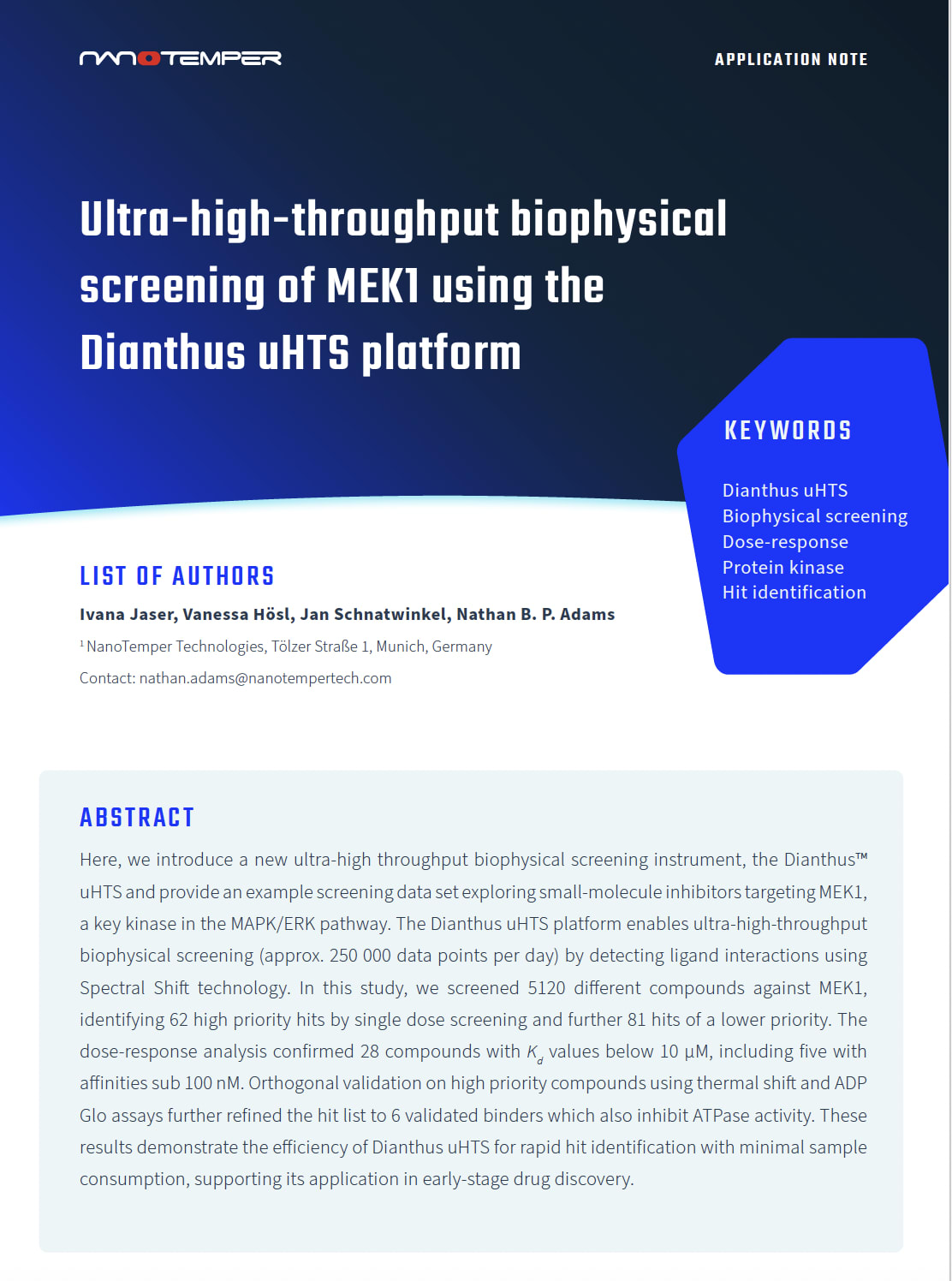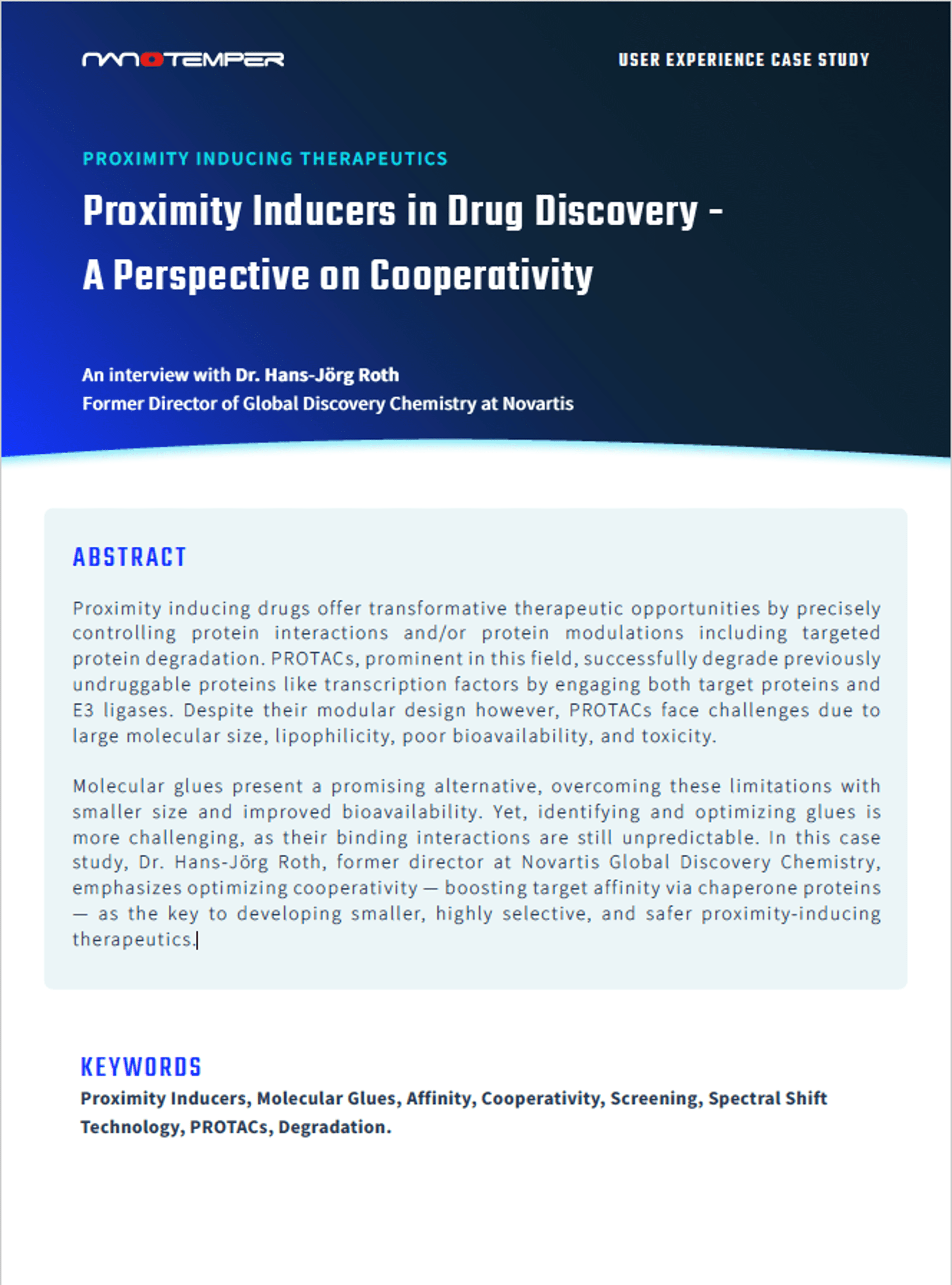Schulte, C., Khayenko, V., Nordblom, N., et al.
iScience 2018, vol: 24(1) doi: 10.1016/j.isci.2020.101898
Abstract
Protein-protein interactions (PPIs) are of fundamental importance for our understanding of physiology and pathology. PPIs involving short, linear motifs play a major role in immunological recognition, signaling, and regulation and provide attractive starting points for pharmaceutical intervention. Yet, state-of-the-art protein-peptide affinity determination approaches exhibit limited throughput and sensitivity, often resulting from ligand immobilization, labeling, or synthesis. Here, we introduce a high-throughput method for in-solution analysis of protein-peptide interactions using a phenomenon called temperature related intensity change (TRIC). We use TRIC for the identification and fine-mapping of low- and high-affinity protein interaction sites and the definition of sequence binding requirements. Validation is achieved by microarray-based studies using wild-type and mutated recombinant protein and the native protein within tissue lysates. On-chip neutralization and strong correlation with structural data establish TRIC as a quasi-label-free method to determine binding affinities of unmodified peptide libraries with large dynamic range.
Topics: Dianthus, TRIC, Publications









